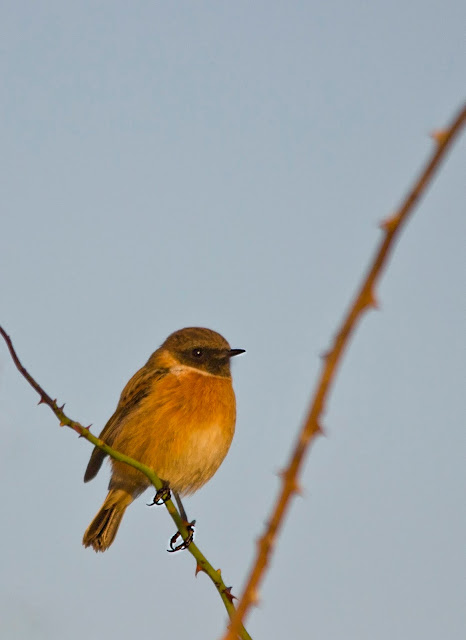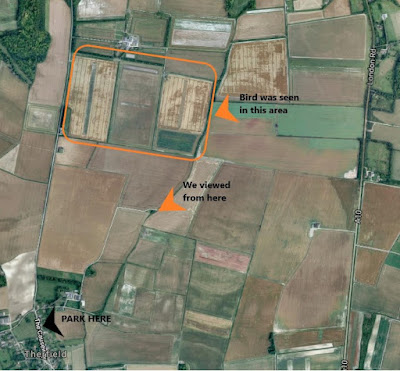Another trip this morning to Dungeness hoping to finally see a Buff-breasted Sandpiper. It's a bird I've not managed to see, having dipped four individuals on each of the four occasions previously.
This Buff-breasted Sandpiper was first reported at Scotney GP on the 25th but had been very elusive and seemed to go missing for long periods.
We started the morning with a drive along galloways, however, this was cut short when the MOD red flags were raised. Stonechat, Meadow Pipit and Reed Bunting were seen before leaving.
We had a quick drive along the entrance track of the reserve and managed to see six Cattle Egret still at roost in the field near Boulderwall Farm. At Arc Pit, a Bittern flew in and landed among the reeds right in front of the hide. It then emerged from the reeds giving stunning views.
The only news of the Buff-breasted Sandpiper all morning had been negative! On the 1km walk along the track, we met several returning birders but none of them had seen the bird despite lengthy searches. Reaching the double metal gates we began scanning the fields. We had been told it favoured an area in front of the green and white generator and this is where we began the search. After several scans across the fields, Brian picked up movement in the short grass close to the water's edge. It was the Buff-breasted Sandpiper! Too far for a photo, but I was quite content with the scope views I was enjoying. After putting the news out we headed for home, dropping in at Elmley on route, where we found another six Cattle Egrets along the entrance track.


























